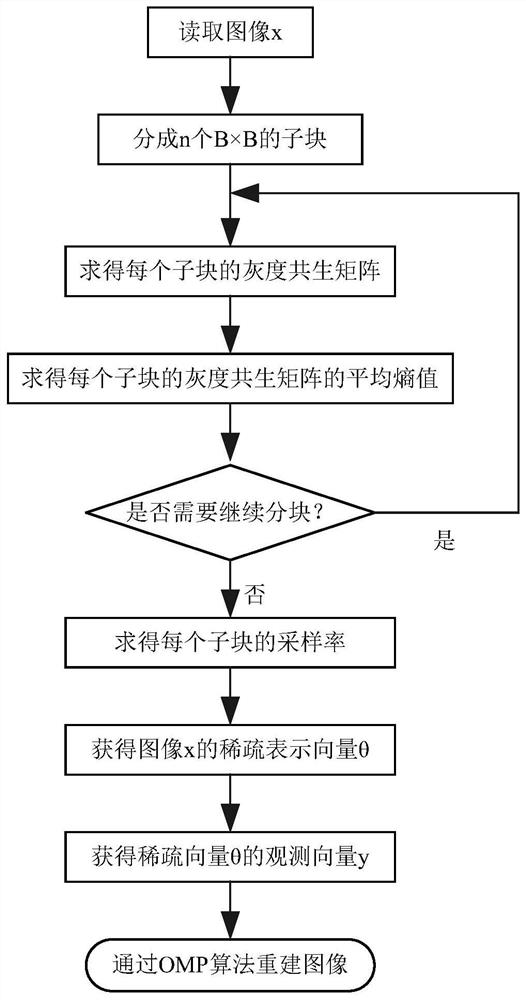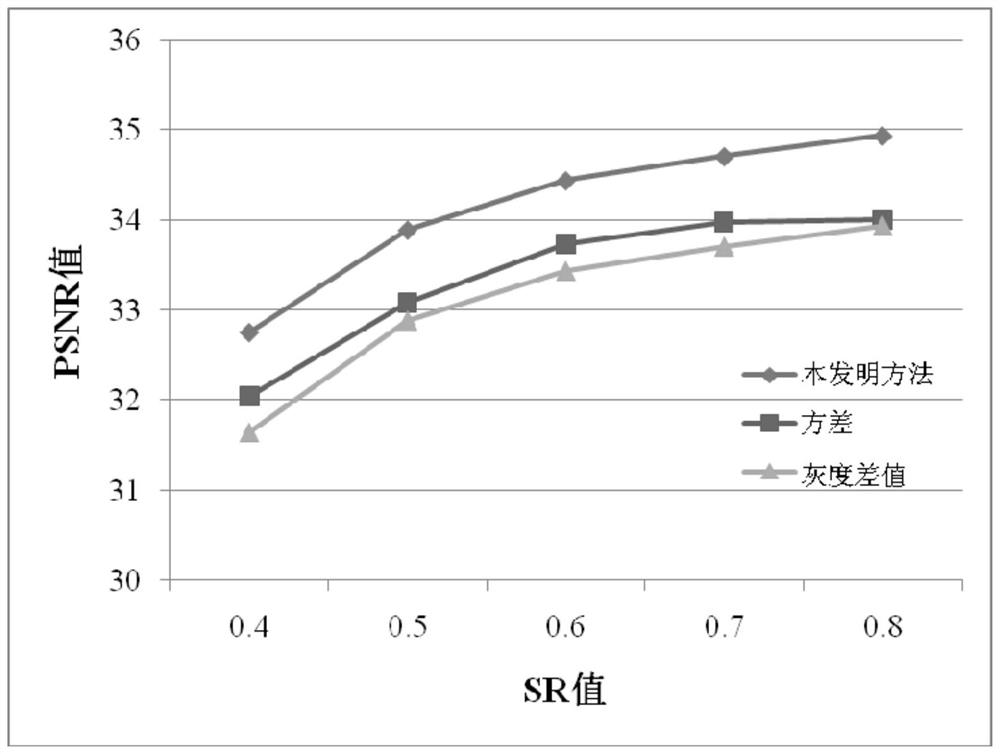A Spaceborne Remote Sensing Image Compression Method Based on Adaptive Block Compression Sensing
A block-compressed sensing and remote sensing image technology, applied in the field of image processing, can solve the problems of high hardware requirements and high complexity, and achieve the effect of eliminating block effects and reducing reconstruction time
- Summary
- Abstract
- Description
- Claims
- Application Information
AI Technical Summary
Problems solved by technology
Method used
Image
Examples
Embodiment Construction
[0029] The present invention will be further elaborated below by describing a preferred specific embodiment in detail in conjunction with the accompanying drawings.
[0030] Such as figure 1 As shown, a spaceborne remote sensing image compression method based on adaptive block compressed sensing, including:
[0031] Step S1, divide an image into several sub-blocks, the size of the sub-blocks in this example is 64×64, but not limited to this value.
[0032] Step S2, obtain the gray level co-occurrence matrix of each sub-block, as shown in the following formula:
[0033]
[0034] in, Indicates the gray level co-occurrence matrix of the current sub-block, is the probability that a pixel with a gray level of α reaches a pixel with a gray level of β through a pre-set path relationship, α and β represent the gray level of the pixel, L represents the gray level of the image, and d k (k=1,2,3,4) is the path relationship between pixels on the image, respectively representing t...
PUM
 Login to View More
Login to View More Abstract
Description
Claims
Application Information
 Login to View More
Login to View More - R&D
- Intellectual Property
- Life Sciences
- Materials
- Tech Scout
- Unparalleled Data Quality
- Higher Quality Content
- 60% Fewer Hallucinations
Browse by: Latest US Patents, China's latest patents, Technical Efficacy Thesaurus, Application Domain, Technology Topic, Popular Technical Reports.
© 2025 PatSnap. All rights reserved.Legal|Privacy policy|Modern Slavery Act Transparency Statement|Sitemap|About US| Contact US: help@patsnap.com



